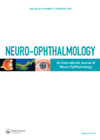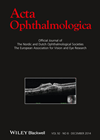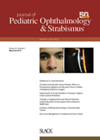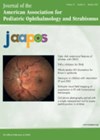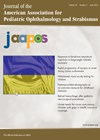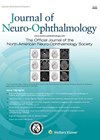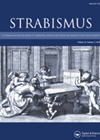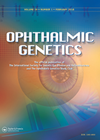You searched for "Nigeria"
Assessing everyday visual function in dry AMD – what matters to the person?
1 April 2019
| Bethany E Higgins, Deanna J Taylor, David P Crabb (Prof)
|
EYE - Vitreo-Retinal
Age-related macular degeneration (AMD) is the primary cause of blindness in the developed world and is accountable for more than one half of sight impairment registrations within England and Wales [1]. AMD is prevalent in people aged 60 years and...
Comparison of treatment for hemianopia following stroke
1 August 2016
| Claire Howard
|
EYE - Neuro-ophthalmology
|
Fresnel prisms, homonymous hemianopia, randomised controlled trial, recruitment, screening, stroke, visual search
The authors report the screening process and recruitment figures for a randomised controlled trial comparing interventions for post stroke homonymous hemianopia. Interventions included Fresnel prisms, visual search training and standard care (information only). Primary outcome measure was the change in...
Functional visual field loss using automated static perimetry
1 February 2015
| Nana Theodorou
|
EYE - Neuro-ophthalmology
|
functional visual field loss, optic nerve, perimetry, visual fields
Functional visual field loss is traditionally assessed by kinetic perimetry, typically producing spiralling isopters. This study looked at the spatial distributions of functional field deficits using automated static perimetry. A retrospective review of automated perimetry records was conducted using a...
Comparison of vision screeners
The primary purpose of this study was to calibrate the various paediatric photoscreeners over a range of contact lens induced hyperopic and astigmatic anisometropia using the American Association of Paediatric Ophthalmology and Strabismus (AAPOS) criteria for anisometropic or axial astigmatism....Divergence insufficiency esotropia is increasingly more common and new theory of aetiology
The authors present a retrospective case review of acquired esotropia. An internal database was reviewed for cases of esotropia and divergence insufficiency between 1978 and 2018 and seen by a single ophthalmologist. Patients with initial presentation of esotropia onset after...Association between COVID-19 restrictions and accelerated myopia progression
A retrospective case review aimed to evaluate the association between home confinement and progression of myopia in Argentina during 2020. Data was collected using an online survey of ophthalmologists throughout Argentina. The inclusion criteria included being five to 18-years-old, found...Using perimetry to support lesion location in the retrochiasmal visual pathway
3 April 2023
| Lauren R Hepworth
The authors present a retrospective case review of patients with homonymous hemianopia from a 30-year period. Inclusion criteria included completion of perimetry within two years of diagnosis and a MRI brain. Data extracted from the records included demographics, diagnosis details...
Natural history of optic nerve head drusen in a paediatric population
A retrospective case notes review is presented focusing on children diagnosed with optic nerve head drusen over an eight-year period. Inclusion criteria included cases coded for optic nerve head drusen and / or pseudopapilledema. The aim of the study was...Updated staging of LCHADD retinopathy
2 August 2024
| Ian Reekie
|
EYE - Vitreo-Retinal
The authors present their proposal for an updated staging system for Long-Chain 3-Hydroxyacyl-CoA Dehydrogenase (LCHAD) deficiency retinopathy. This is a rare mitochondrial disease due to deficiency of the long chain fatty acid oxidation pathway. Forty patients who were part of...
Sexually transmitted conjunctivitis – the REALLY sticky eye
Let’s face it, patients with conjunctivitis don’t always produce the most stimulating consultations and most of the time we can manage them in auto-pilot. The prospect of delving into such a patient’s sexual history is not overly appealing, but this...Orbital cellulitis - an overview of the diagnosis and management
1 February 2022
| Mohammad Farwana
|
EYE - Orbit, EYE - Neuro-ophthalmology, EYE - Imaging, EYE - General
Periorbital (preseptal) and orbital cellulitis are infections of the subcutaneous tissues of the eye. They are differentiated by the location of the infection. Periorbital cellulitis refers to infection of the eyelid and subcutaneous tissues anterior to the orbital septum, whereas...
One-year result of XEN45 implant for glaucoma: efficacy, safety, and postoperative management
1 August 2018
| Sofia Rokerya
|
EYE - Glaucoma
The authors report a retrospective, non-randomised interventional case series of 39 patients who underwent a standalone XEN45 implantation. All 39 patients (female: male=1.2: 1) completed 12-month follow-up. Mean age was 70.1 years (range 32–92). Primary outcome measures were the intraocular...

